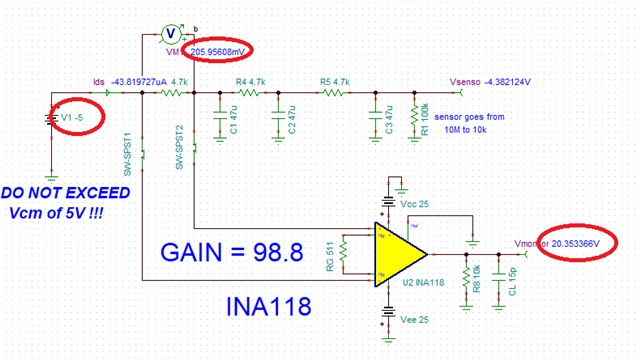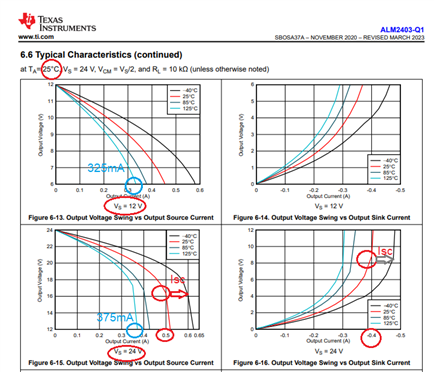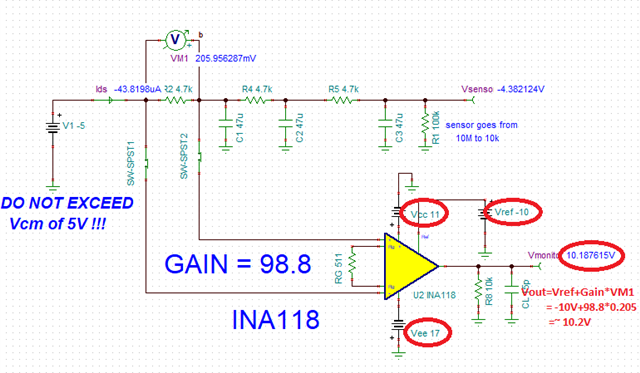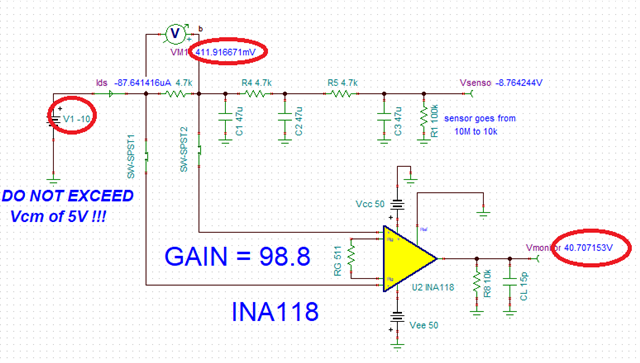Other Parts Discussed in Thread: TINA-TI, INA828, INA188
Dear Supp (see ort,
I have to measure the current flowing into a sensor showing a pure real impedance in the range from 10M to 100k. Please see the attached TINA-TI schematic.current_sensing_with_INA118.TSC
The current flowing into the sensor is measured by probing the voltage across a 4.7k resistor (see schematic).
I used the INA118 configured with a 100x Gain. According to the datasheet, the tolerated Vcm should be in excess of 5V. However, in my application, I could be forced
to power the sensor with a voltage up to 10V, so the 5V limit could be a problem.
Moreover, I have to preserve the noise voltage appearing across the sensor, so I guess using a sero-drift is not a wise choice.
Do you have any suggestion/advice ? Should any other INA be considered ? Is a FET input INA to be considered ?
Thank you so much for your help.
Best,
Alberto





